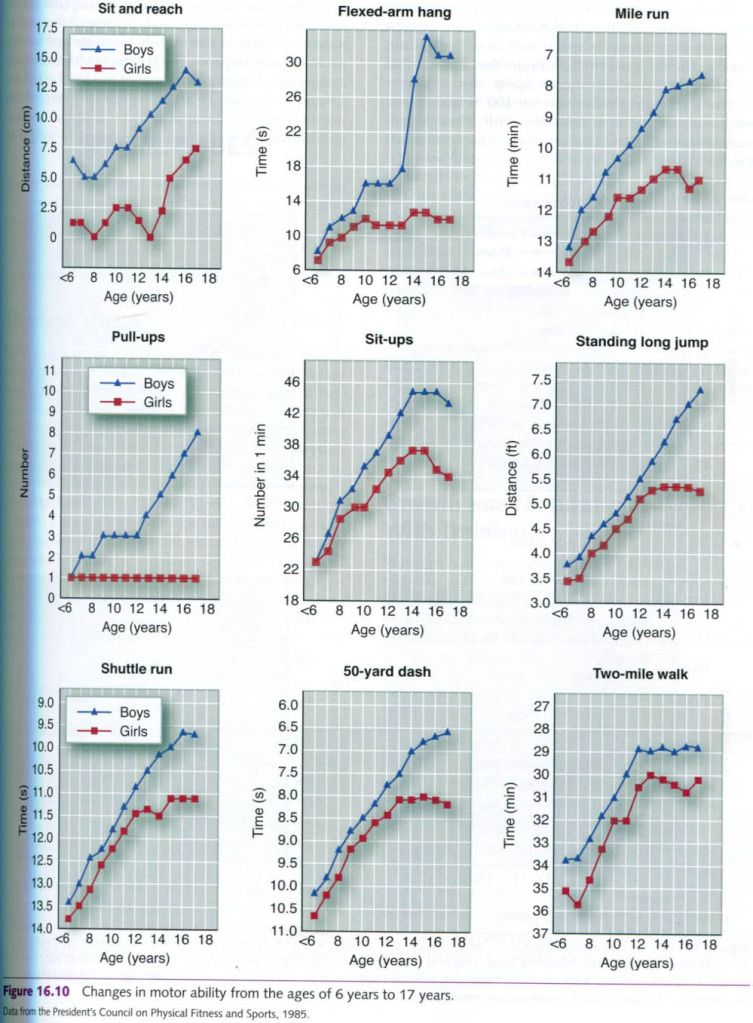The plateau observed in the girls at puberty is
likely explained by three factors. First, as mentioned earlier, the increase in
estrogen levels at puberty, or in the estrogen/testosterone ratio, leads to
increased fat deposition. Performance tends to decrease as fat increases.
Second, girls have less muscle mass. Finally, and probably of greater
importance, around puberty many girls assume a much more sedentary lifestyle
than boys. This is largely a matter of social conditioning, as boys are
encouraged to be more active and athletic than girls. As girls become less
active, their motor abilities tend to plateau. This trend appears to be
changing because of changing social attitudes and more opportunities for sport
and activity now available for girls.
Sport performance in children and adolescents
improves with growth and maturation, as can be seen for age-group records in
sports such as swimming and track and field. Figure below illustrates the
improvement in American records for various age-groups.
The figure gives values for the 100m and 400m
swim and the 100m and 1,500m run. These events were selected because they
represent a predominantly anaerobic event in swimming and running(100m swim and
run) and a predominantly aerobic activity(400m swim and 1,500m run). Both
anaerobic and aerobic performance improve progressively with increasing
age-groups, with the exception of the 1,500m run for 17-and 18-year-old girls.
Similar age-group records for weightlifting do not appear to be available,
because weightlifting competition is organized by weight in broad
classifications such as 16 and under, 17 to 20 years of age, and then adult
classifications. On the basis of normal strength gains with growth and
development, it is assumed that weightlifting records would increase markedly
from late childhood through adolescence, particularly in boys.











0 коментара:
Постави коментар